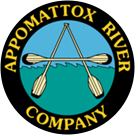Recreational Kayak Buying Guide: Seats and Outfitting
Once you've determined the hull type you want to look for, it's a good idea to consider what comfort features you'll want on the deck or in the cockpit of your kayak. These are usually called outfitting. Simply put, outfitting is the user interface of the kayak: the seat, foot rests, hip and thigh braces, and anything else used to connect you to your boat.
Seats:
For most rec kayakers, the seat is the most important piece of outfitting in a boat. We like to consider seats in three main categories: simple molded or padded seats, adjustable non-frame seats, and frame seats.

-
Molded Seats: The least expensive and most durable seats are simply molded into the deck of the kayak, and sometimes the manufacturer adds foam padding or an adjustable backrest to these. While they are hard to break, they don't provide a lot of support or customization. Since they usually sit right on the deck of the kayak, you may find that they don't drain water well and that you end up sitting in a wet seat more often.

- Adjustable Non-frame: These seats are generally considered mid-range, and you can find them with a wide array of features depending on the brand and model of kayak. Most seats in this category use a raised seat pan, which drains water below the seat to keep you drier and more comfortable. They also usually feature more advanced foam and mesh padding for ventilation and moisture wicking, and you can often adjust the back height and even leg lifter straps on some models. These seats usually sit lower to the waterline than frame seats, so they are a good balance of comfort, control, and stability.


- Frame Seats: The most comfortable kayak seats use metal frames much like stadium seats. They are removable and many offer more than one position--high or low, or even forward or backward adjustments. Many come with large amounts of padding and even lumbar support. Frame seats usually raise the price of a boat by at least $100, sometimes much more. They are easier on those who have back and knee issues, and are much easier to stand up out of. Since they are removable, always make sure to secure them before hitting the water--they don't float and they can be hard to replace. Because frame seats naturally lift the paddler higher above the water line, the center of gravity is changed and the boat will feel less stable and harder to control. Most kayaks add stability to the hull to offset this effect.


Foot Rests:
All kayaks need some type of foot rest, but they are all slightly different. The most affordable foot rests are simply a series of molded in footwells, where the paddler chooses the most comfortable one based on leg length. Mid-range and higher end kayaks feature adjustable foot pegs, which are more customizable and tend to keep your ankles at a more natural angle.

Hip and Thigh Braces:
When sitting inside a kayak, your hips are your most powerful control point, so snug hip pads give you more direct control over the boat. Thigh braces lock your legs into the right position for ultimate control, so you usually only find these in performance day touring or whitewater kayaks. While these pieces aren't common, you'll want to consider them if you plan to cover long distances or are simply looking for the most efficient boat. A few sit on top boats meant for mild whitewater use also offer thigh straps as a way to achieve this control.
















